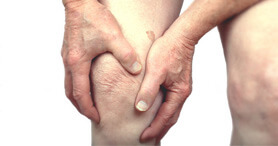Our Services

Living With Arthritis Easy-to-Read Information for Patients and Families
What Is Arthritis?
Many people start to feel pain and stiffness in their bodies over time. Sometimes their hands or knees or shoulders get sore and are hard to move and may become swollen. These people may have arthritis (ar-THRY-tis). Arthritis may be caused by inflammation (in-flah-MAY-shun), of the tissue lining the joints. Some signs of inflammation include redness, heat, pain, and swelling. These problems are telling you that something is wrong.
Joints are places where two bones meet, such as your elbow or knee. Over time, in some types of arthritis but not in all, the joints involved can become severely damaged.
There are different types of arthritis. In some diseases in which arthritis occurs, other organs, such as your eyes, your chest, or your skin, can also be affected. Some people may worry that arthritis means they won’t be able to work or take care of their children and their family. Others think that you just have to accept things like arthritis.
It’s true that arthritis can be painful. But there are things you can do to feel better. This booklet tells you some facts about arthritis and gives you some ideas about what to do, so you can keep doing many of the things you enjoy.
Arthritis includes a variety of inflammatory and noninflammatory joint diseases such as osteoarthritis, gout, rheumatoid arthritis, and juvenile rheumatoid arthritis.
Although the term arthritis is applied to a wide variety of disorders, arthritis means inflammation of a joint, whether the result of a disease, an infection, a genetic defect, or some other cause.
Arthritis inflammation causes pain, stiffness, and swelling in the joints and surrounding tissues. Many people mistakenly perceive arthritis as any kind of pain or discomfort associated with body movement, including low back pain, bursitis, tendinitis, and general stiffness or pain in the joints. However, these symptoms may not be caused by arthritis. A doctor needs to confirm a diagnosis of arthritis.
For many, but not all, arthritis seems to be an inevitable part of aging. While there are no signs of long-lasting cures in the immediate future, advances in both conventional medical treatment and alternative therapies have made living with arthritis more bearable.
The Major Types of Arthritis
Osteoarthritis, or degenerative joint disease, refers to the pain and swelling that can result from the progressive loss of cartilage in the joints. It is the most common form of arthritis, affecting nearly 27 million adults in the United States, particularly older adults. In osteoarthritis, the protective cartilage that cushions the ends of bones within joints gradually wears away, which is why it is sometimes called "wear and tear" arthritis. It can affect almost any joint in the body, but commonly involves the weight-bearing joints: the knees, hips, and spine.
It can also affect the fingers and any joint with previous injury from trauma, infection, or inflammation. The inner bone surfaces become exposed and rub together, and in some cases, bony spurs develop on the edges of joints, causing damage to muscles and nerves, pain, deformity, and difficulty moving.

What Are the Types of Arthritis?
Dementia is a an illness that usually occurs slowly over time, and usually includes a progressive state of deterioration. The earliest signs of dementia are usually memory problems, confusion, and changes in the way a person behaves and communicates.
There are several types of arthritis. The two most common ones are osteoarthritis (AH-stee-oh-ar-THRY-tis) and rheumatoid (ROO-mah-toyd) arthritis.
Osteoarthritis is the most common form of arthritis. This condition usually comes with age and most often affects the fingers, knees, and hips. Sometimes osteoarthritis follows an injury to a joint. For example, a young person might hurt his knee badly playing soccer. Or someone might fall or be injured in a car accident. Then, years after the individual’s knee has apparently healed, he might get arthritis in his knee joint.
Rheumatoid arthritis happens when the body’s own defense system doesn’t work properly. It affects joints and bones (often of the hands and feet), and may also affect internal organs and systems. You may feel sick or tired, and you may have a fever.
Another common type of arthritis, gout, is caused by crystals that build up in the joints. It usually affects the big toe, but many other joints may be affected.
Arthritis is seen with many other conditions. These include:

Do I Have Arthritis?
Increasing forgetfulness or mild confusion may be the first symptoms of Alzheimer's disease and memory loss that you notice. But over time, Alzheimer's robs you of more of your memory, especially recent memories. The rate at which symptoms progress varies from person to person.
Pain is the way your body tells you that something is wrong. Most types of arthritis cause pain in your joints. You might have trouble moving around. Some kinds of arthritis can affect different parts of your body. So, along with pain in your joints, you may:
These symptoms may also be signs of other illnesses.


